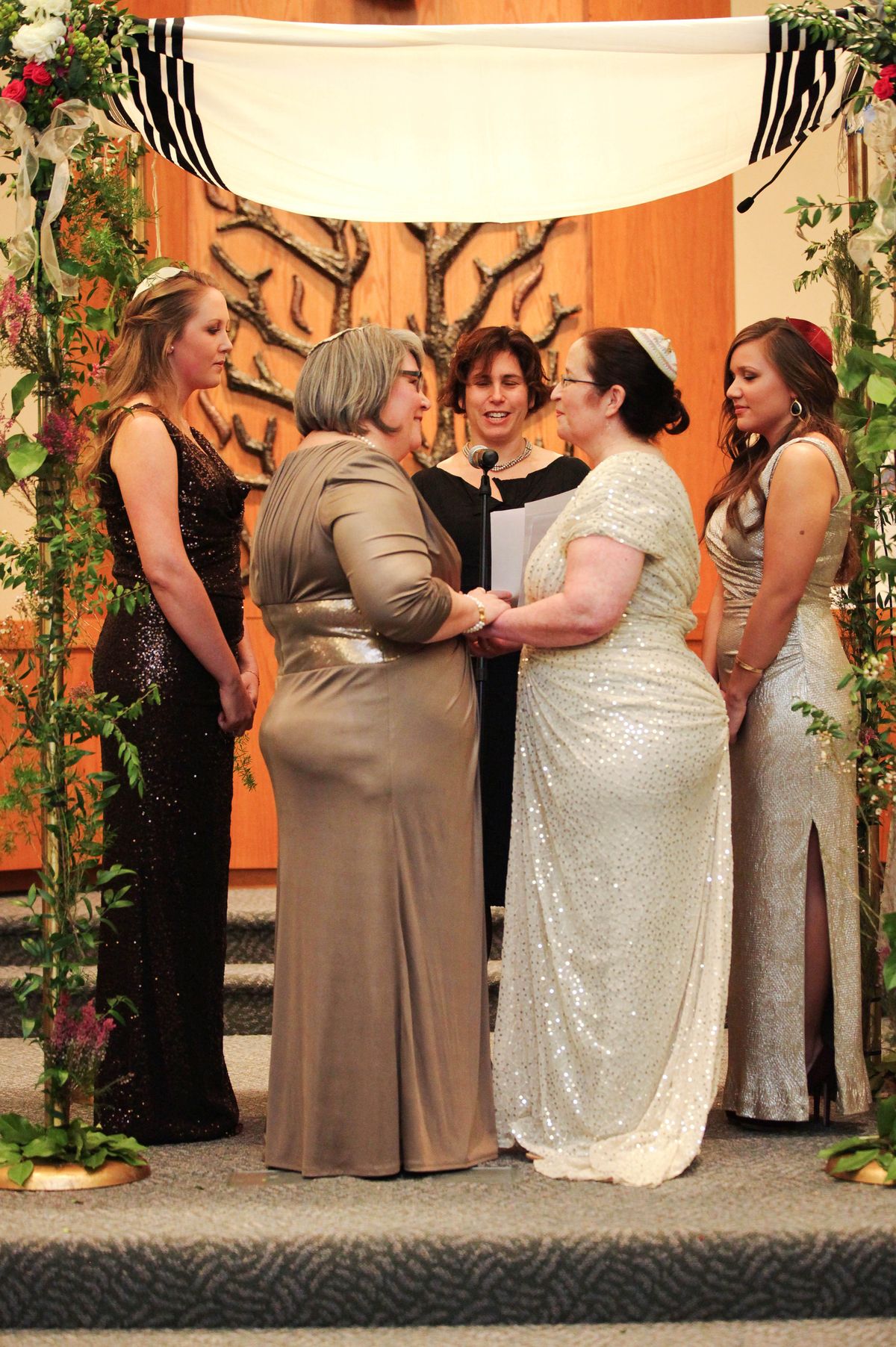State of new unions
Same-sex weddings are starting to evolve with a mix of traditions

SEATTLE – “People used to ask, ‘When are you getting married?‘” Shelly Crocker says, leaning across the table at a north Seattle donut shop next to her wife, Sandy Kibort, and their daughter, Emma Kibort-Crocker.
“I always told them, ‘Well, the entire state of Washington has to vote on it first.’ ”
Crocker and Kibort got that nod in November. Two months after Washington voters approved Referendum 74, the couple were legally wed in their synagogue. High school sweethearts originally from Minneapolis, Kibort and Crocker had first been joined in a commitment ceremony in 1984, but waited to legally marry until they could do so in their own state.
That’s a trend among same-sex couples, says Kirsten Ott Palladino, the Atlanta-based co-founder and editor in chief of EquallyWed.com, an online magazine devoted to same-sex weddings.
“As more states are legally recognizing same-sex marriage, couples are choosing to wait to marry in their home states,” Palladino said. “We’re not seeing as many people flying to Massachusetts or New York for their big weddings.”
Palladino also cites a growing interest in incorporating religion into same-sex ceremonies, as Crocker and Kibort did.
“For a time, there was a backlash against including religion in same-sex weddings. Now couples seem proud to put religion and cultural traditions back into their ceremonies,” Palladino said.
There’s more freedom these days to choose a wedding that reflects a couple’s relationship and budget, according to Steven Petrow, author of “Steven Petrow’s Complete Gay & Lesbian Manners” (Workman, 2011).
This generation of gays and lesbians is creating a new set of rites and rituals incorporating both old and new traditions, said Petrow, who lives in Hillsborough, N.C., a state that doesn’t allow same-sex marriage.
He cites one new tradition of sending the rings around to be blessed by all those in attendance. “It’s like a metaphor for a group hug,” Petrow said. “It’s incredibly moving.”
Today’s same-sex couples often go with nontraditional wedding party configurations.
And often the couple walk down the aisle together, “or if they have kids, the whole family may process,” he says.
Crocker and Kibort sent their two adult daughters, Emma and Hannah Kibort-Crocker, down the aisle before them.
“It was a very family wedding,” Kibort said. “My kids pulled a prank on me in the middle of the ceremony and it was a crackup. Everyone was laughing.”
Like Kibort and Crocker, many same-sex couples tying the knot are in midlife, and have well-established relationships and children. While their parents may be given honored roles in the ceremony or reception, such as the first dance, many couples are planning and paying their own way.
It remains to be seen how younger same-sex couples will structure their weddings as they marry earlier in life. Petrow notes that while his generation of gays and lesbians had no expectation of getting married, today’s kids are growing up expecting to have the choice.
And just because they have the right to marry doesn’t mean a couple will choose to do so. “It’s impolite to hassle people – gay or straight – about getting married,” says Petrow.
Guests should decline to attend if they can’t support the couple’s relationship, Petrow said. “Same-sex weddings, like straight weddings, are at their heart about love and commitment. If you can’t honor the couple, please stay home.”
Crocker and Kibort even bristle at the term “gay marriage.”
“I don’t gay park. I don’t have gay lunch,” says Kibort. “You don’t say you’re going to an interracial marriage. It isn’t a gay marriage. It’s a marriage.”